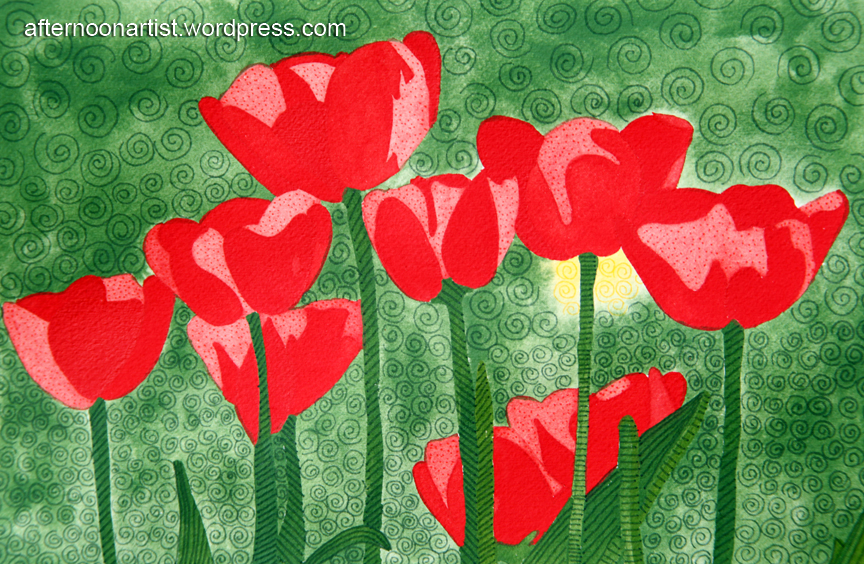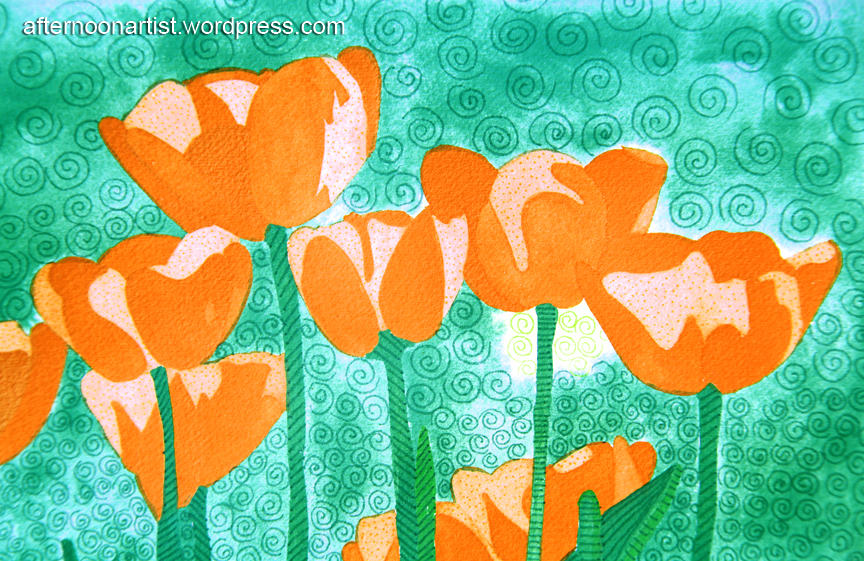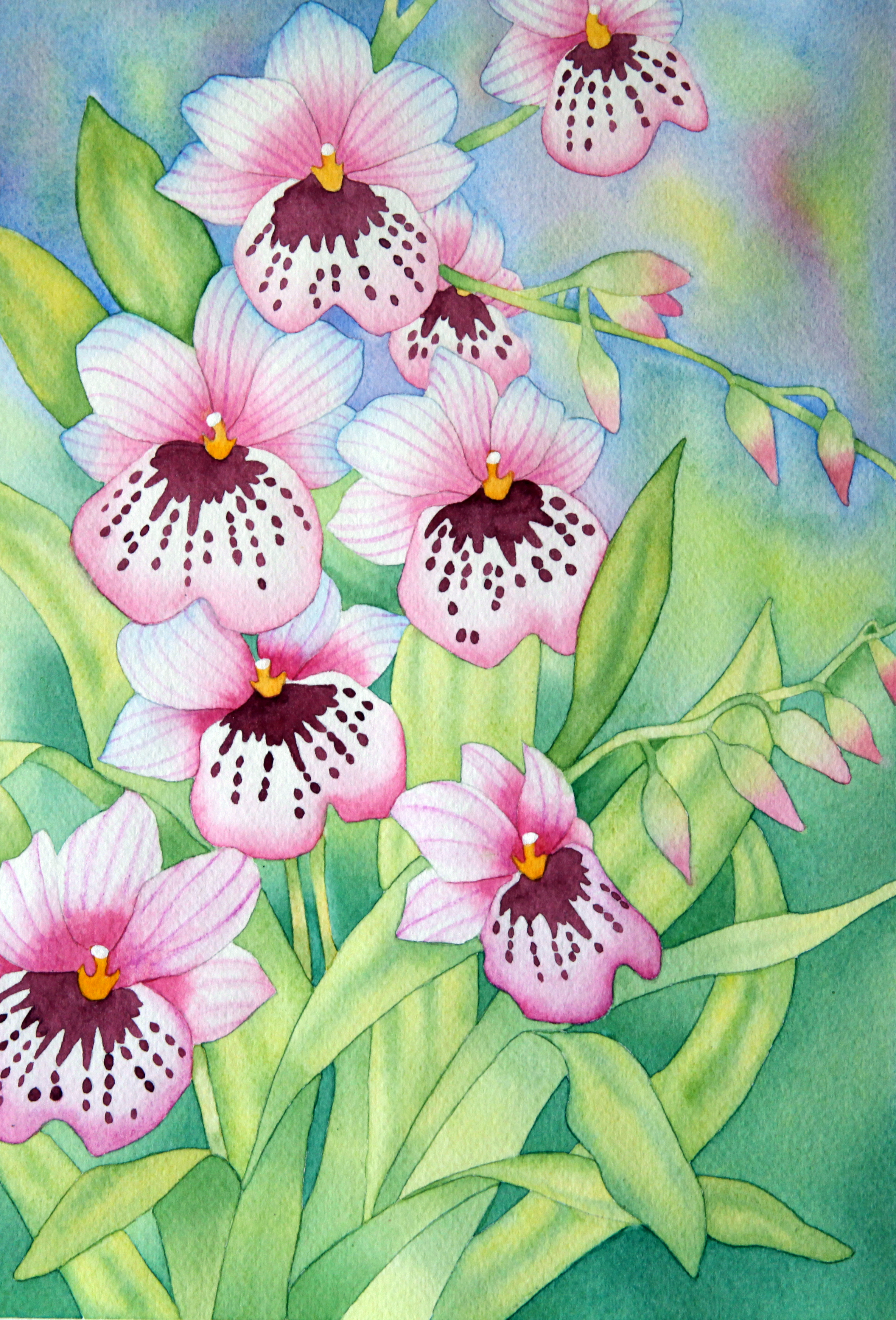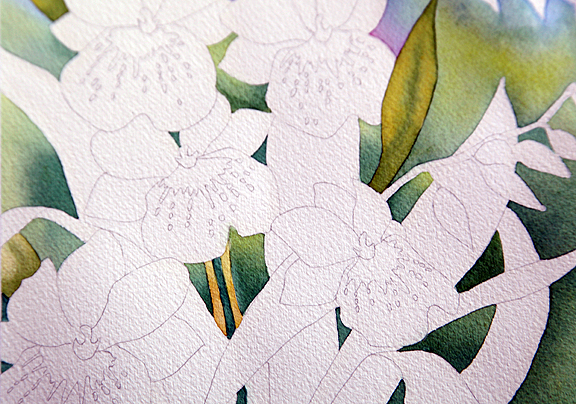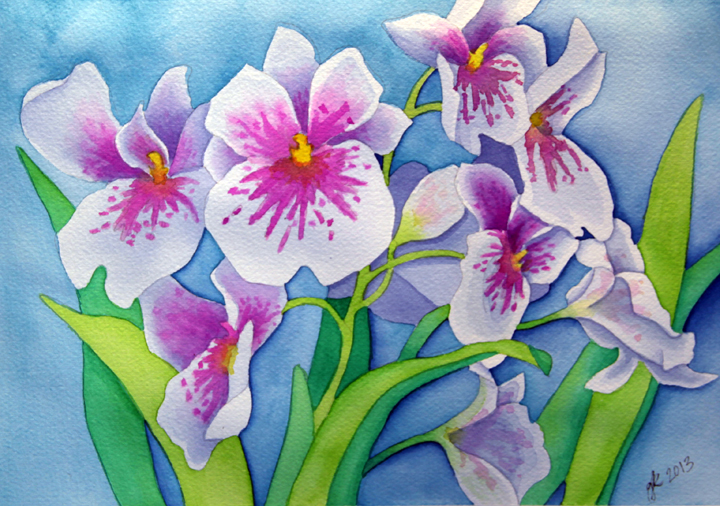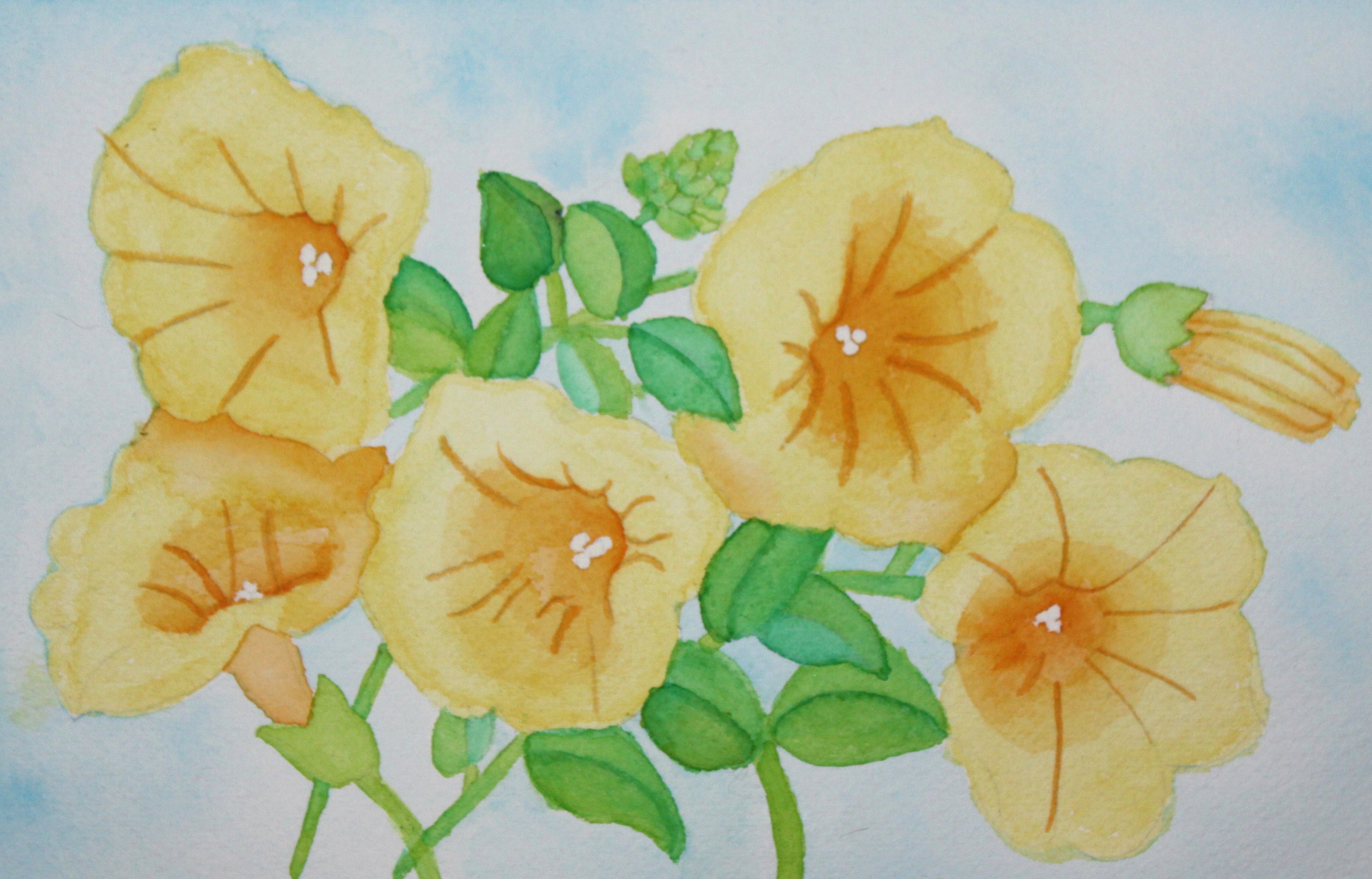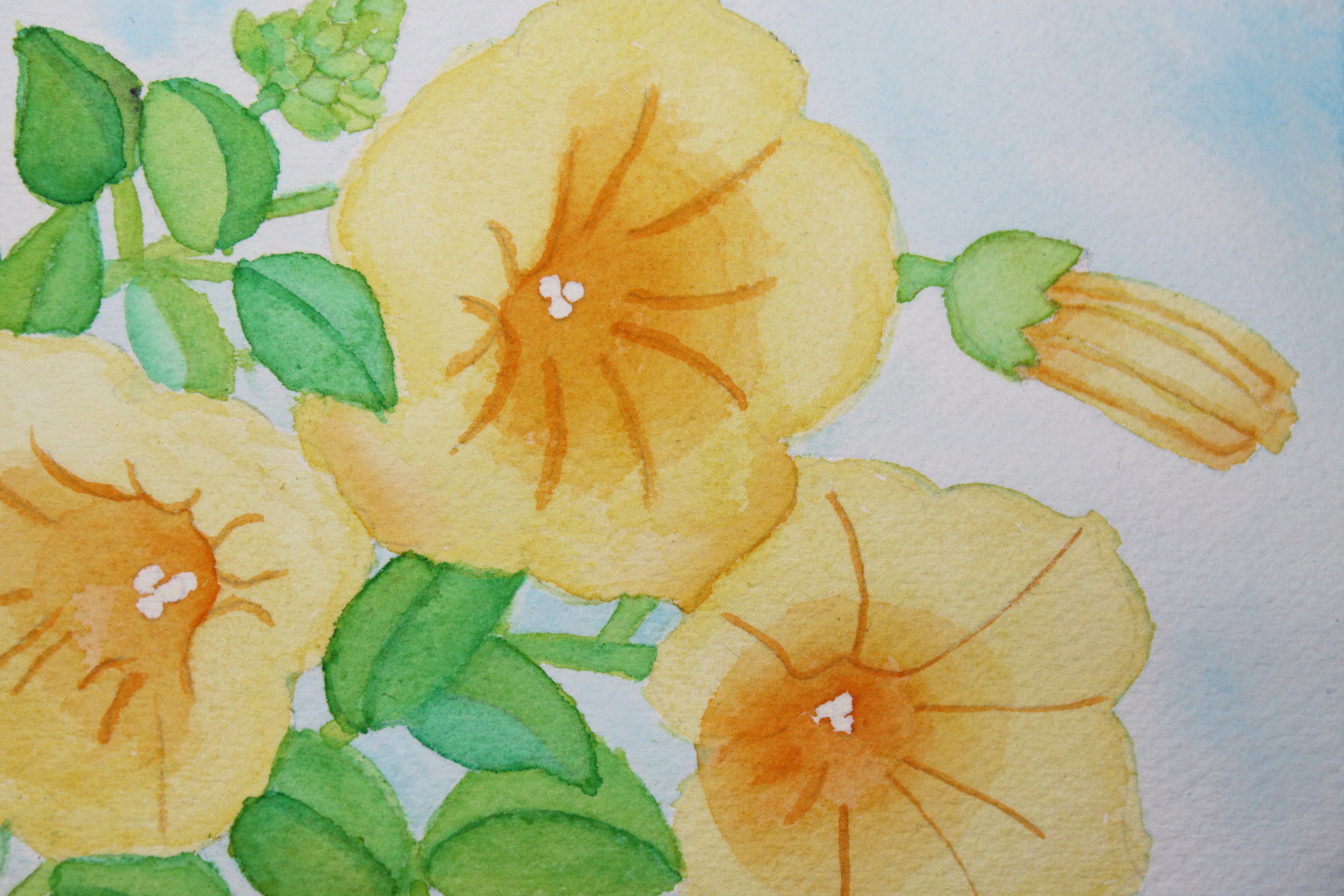
This past weekend I hosted a family summer watercolor fest. My sister, niece, daughter, and I had a great time painting, chatting, singing Taylor Swift’s annoying song, “we are never-ever-ever getting back together” over and over again, and snacking on caramel macchiatos and homemade brownie cupcakes. The cupcakes were amazing; I’ll be posting the recipe next.
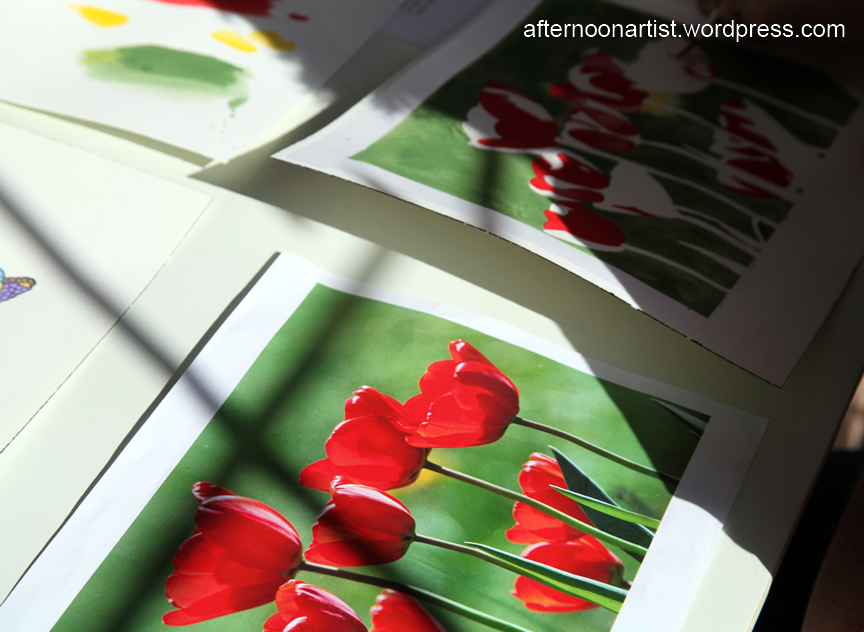
For this painting session we thought it would be fun to paint the same painting and compare our individual results. We took this challenge a step further and decided to add texture with pen and ink on top of the completed paintings. We were inspired by the work of artist Cindy Dauer and her Slumbering Herd. If you’re not familiar with Cindy’s work, check out her blog, The Slumbering Herd, and prepare to be delighted.
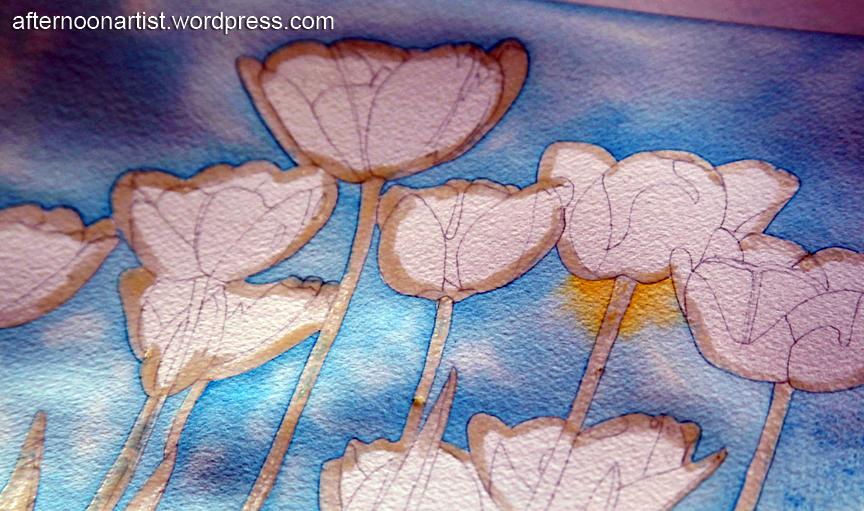
Here, I applied liquid frisket to mask out the tulips, leaves, and stems while I painted the cloudy background.
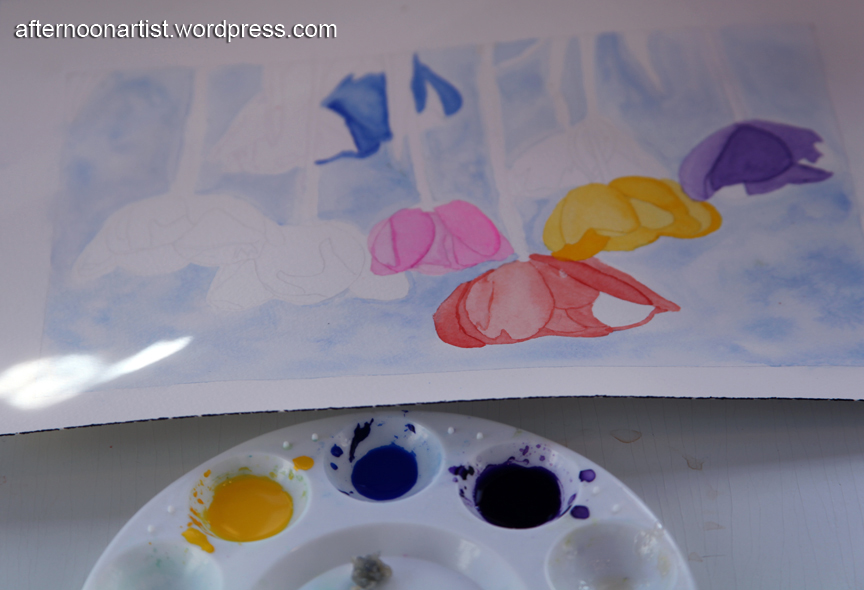
This is my niece, Karen’s painting in progress. It’s upside down in this view because I was sitting across from her when I snapped the photo.
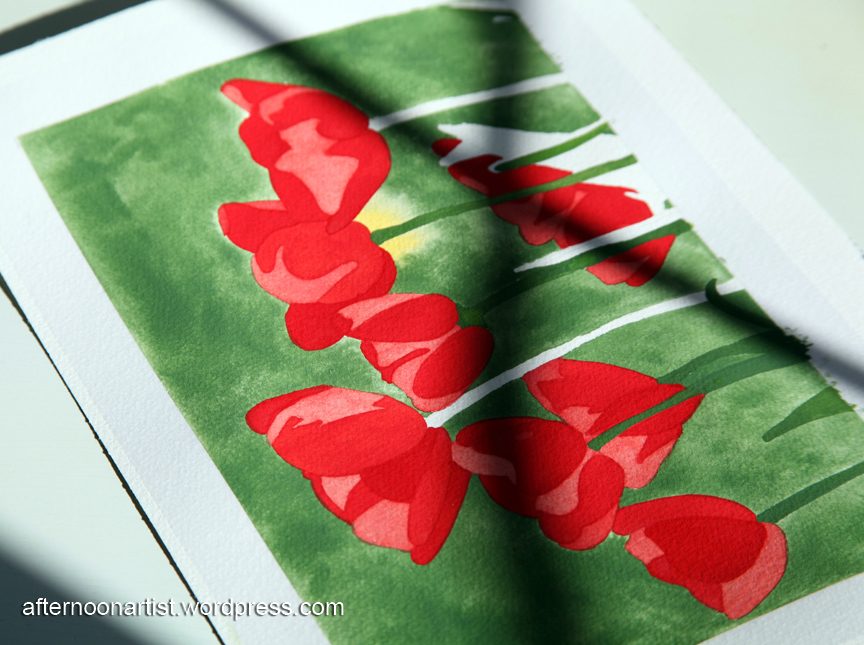
This is my sister’s work in progress. She chose colors that closely resembled those in the reference photo, but then went crazy with ink and texture. You won’t believe how many looks she was able to achieve with this painting. I’ll be showing photos of the completed paintings next.
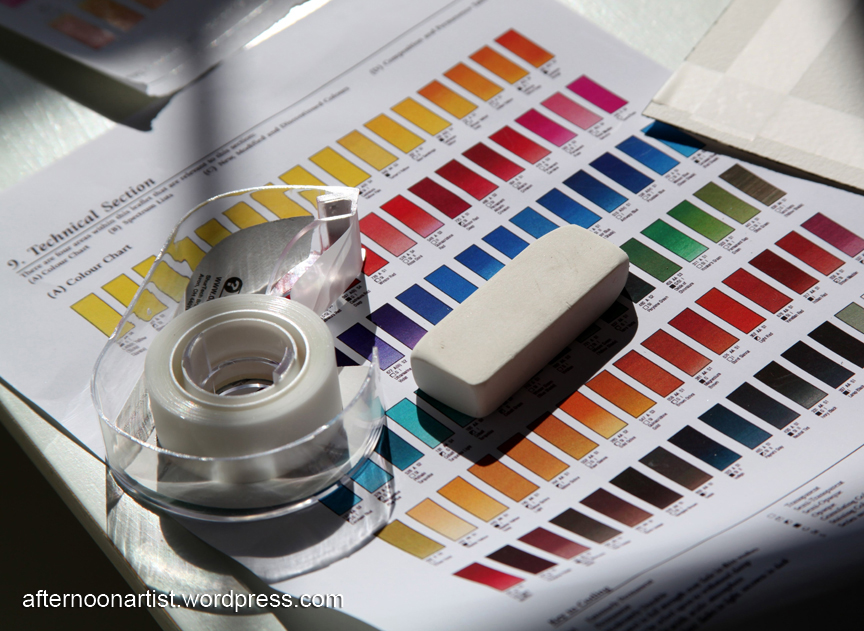
This Winsor Newton watercolor chart came in handy when we were choosing the color schemes for our paintings or trying to match a color in a reference photo. If you ever have an opportunity to host or join a painting party, I highly recommend them. They’re lots of fun and a great learning experience.
Like this:
Like Loading...



